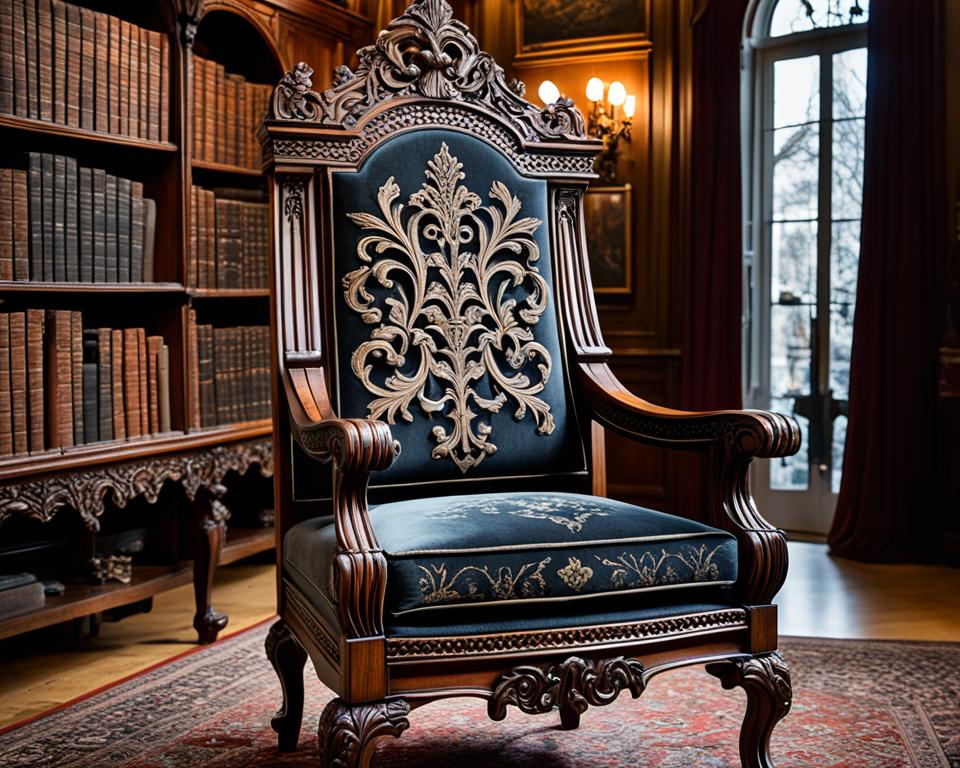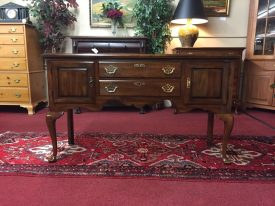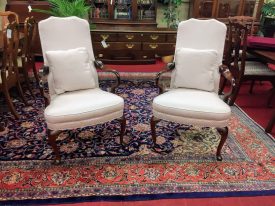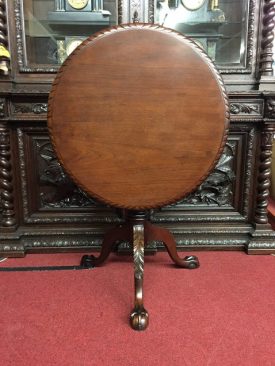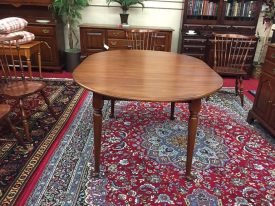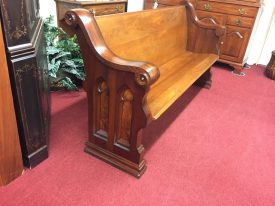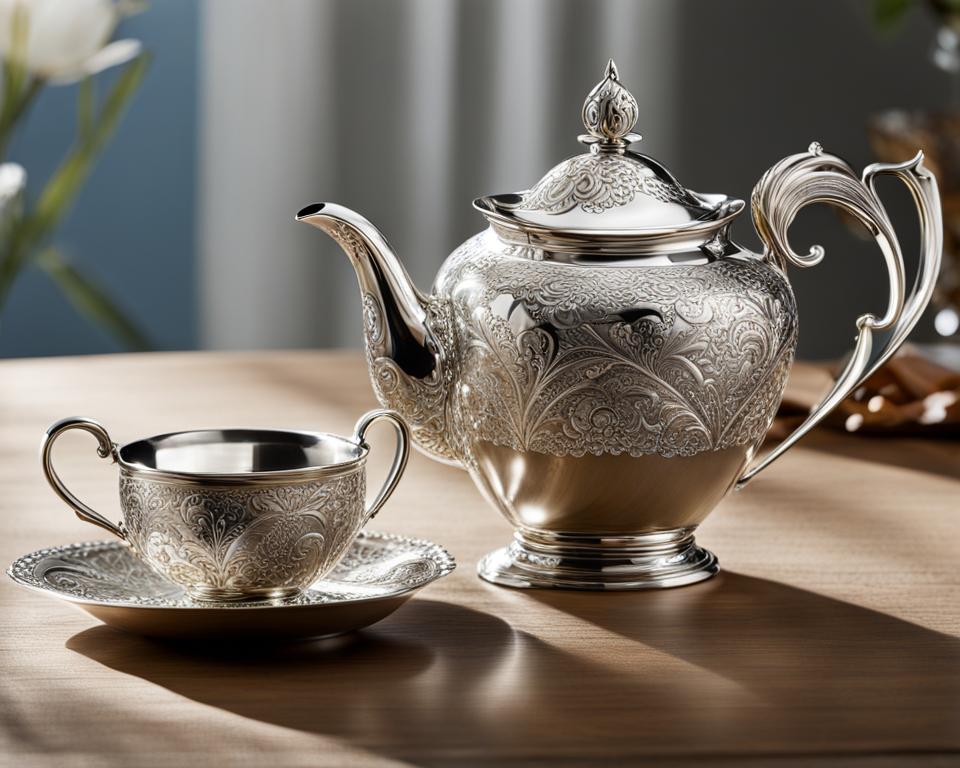The allure of Gothic Revival antique furniture is undeniable. With its intricate details, rich history, and timeless beauty, Gothic Revival pieces have a special place in the hearts of collectors and enthusiasts. From chairs and tables to cabinets and decor, these vintage treasures bring a touch of old-world charm to any space.
Key Takeaways:
- Gothic Revival antique furniture is highly sought after for its unique beauty and craftsmanship.
- Chairs, tables, cabinets, and decor are all available in the Gothic Revival style.
- The style originated in the 19th century as a response to a renewed interest in medieval design.
- Gothic Revival furniture features distinctive characteristics such as pointed arches and intricate carvings.
- Proper care and maintenance are essential in preserving the beauty of Gothic Revival pieces.
A Brief History of Gothic Revival Furniture.
Gothic Revival furniture traces its origins back to the 19th century, when it emerged as a response to the Romantic movement and a renewed fascination with medieval architecture and design. Inspired by the Gothic style of the Middle Ages, skilled furniture craftsmen began creating exquisite pieces that incorporated distinct Gothic elements such as pointed arches, intricate carvings, and ornate details.
The popularity of Gothic Revival furniture quickly spread throughout Europe, captivating the attention of wealthy homeowners and collectors. Its grandeur and elegance made it a favored choice among those seeking to embellish their interiors with a touch of old-world charm. Eventually, this captivating style crossed the Atlantic and found its way to the United States, where it continued to captivate discerning individuals.
“Gothic Revival furniture perfectly embodies the romanticism and allure of the Middle Ages, captivating the imagination of collectors and enthusiasts across generations.”
Showcasing Distinctive Gothic Elements
Gothic Revival furniture stands out for its unique incorporation of Gothic elements. Chairs feature high backs adorned with pointed arches, invoking the soaring grandeur of medieval cathedrals. Tables and cabinets boast intricate carvings of foliage, animals, and geometric patterns, showcasing the craftsmanship and attention to detail characteristic of this style.
In addition to its intricate designs, Gothic Revival furniture is often crafted from dark, rich woods like oak and mahogany, enhancing its dramatic and timeless appeal. The combination of these elements creates a sense of mystery and elegance that makes Gothic Revival furniture truly remarkable.
A Timeless Style with Enduring Charm
Gothic Revival decor goes beyond furniture and encompasses a wide range of items that embrace the Gothic aesthetic. Chandeliers, sconces, mirrors, and tapestries, among other pieces, contribute to the creation of a mystic and sophisticated atmosphere. Collectors and enthusiasts are drawn to Gothic Revival decor for its unique and iconic designs that add a touch of drama to any space.
“Gothic Revival decor is more than just a collection of items; it is an expression of an exquisite taste that transcends time.”
To understand the historical context of Gothic Revival furniture, it’s essential to recognize its deep roots in the Gothic architecture of the Middle Ages. The soaring cathedrals and intricate stonework seen in Gothic buildings were a source of inspiration for furniture craftsmen, who sought to revive this artistic legacy.
| Period | Influences | Features |
|---|---|---|
| Gothic Architecture | Medieval cathedrals, pointed arches, intricate stonework | Inspiration for Gothic Revival furniture |
| Renaissance | Classical influences | Gothic style fell out of favor |
| 19th Century | Renewed interest in medieval culture | Gothic Revival furniture emerges |
Several notable designers played a significant role in the development of Gothic Revival furniture. In England, architects like Augustus Welby Northmore Pugin and designers like Horace Walpole embraced the Gothic Revival movement, creating iconic pieces that showcased the essence of this style. In the United States, architects Alexander Jackson Davis and Andrew Jackson Downing popularized the Gothic Revival aesthetic, designing homes and advocating for its use in furniture design.
“The vision and creativity of these influential designers shaped the character and appeal of Gothic Revival furniture, leaving a lasting legacy for generations to appreciate.”
Characteristics of Gothic Revival Furniture.
Gothic Revival furniture is renowned for its distinctive features that reflect the medieval aesthetic. From elegant chairs to exquisite tables and cabinets, these pieces showcase the craftsmanship and intricate details that make them truly remarkable.
Gothic Revival Chairs: With their high backs and pointed arches, Gothic Revival chairs exude a sense of grandeur and elegance. The ornate carvings and intricate embellishments add a touch of Gothic charm, creating a captivating focal point in any room.
Gothic Revival Tables: Gothic Revival tables are masterpieces of design, often featuring exquisite carvings of foliage, animals, and geometric patterns. Crafted from dark, rich woods like oak and mahogany, these tables radiate a sense of gothic ambiance and sophistication.
Gothic Revival Cabinets: The cabinets in the Gothic Revival style are true works of art. They boast elaborate carvings and intricate details, often depicting scenes from medieval mythology or religious motifs. These cabinets not only provide ample storage but also serve as stunning decorative pieces that elevate the overall aesthetic of a space.
https://www.youtube.com/watch?v=0N0jSMFJsEU
As shown in the image above, Gothic Revival furniture possesses a strong presence and creates a dramatic ambiance that adds depth and character to any interior.
The combination of these unique characteristics makes Gothic Revival chairs, tables, and cabinets highly sought after by collectors and enthusiasts alike.
The Allure of Gothic Revival Decor.
Gothic Revival decor goes beyond furniture, encompassing a wide range of captivating and mysterious items. From enchanting chandeliers to exquisite mirrors and tapestries, these pieces embrace the Gothic aesthetic, creating an atmosphere of elegance and intrigue.
Collectors are drawn to Gothic Revival decor for its unique and intricate designs, which add a touch of drama and sophistication to any space. The vintage Gothic furniture and collector’s items in this style are highly sought after, reflecting the timeless appeal of the Gothic Revival movement.
| Gothic Revival Decor | Description |
|---|---|
| Chandeliers | Elegant light fixtures with intricate metalwork and captivating designs, often featuring candle or electric lighting. |
| Sconces | Wall-mounted lighting fixtures that capture the essence of Gothic architecture, casting a warm and inviting glow. |
| Mirrors | Elaborate mirrors with decorative frames adorned with Gothic motifs, such as arches, gargoyles, and intricate carvings. |
| Tapestries | Intricately woven textiles depicting scenes from medieval mythology, history, or religious narratives. |
Gothic Revival decor offers collectors the opportunity to add a touch of history and artistry to their homes. These unique pieces embody the rich heritage and craftsmanship of the Gothic Revival style, making them cherished collector’s items that stand the test of time.
Gothic Revival Furniture in Historical Context.
Gothic Revival antique furniture is deeply rooted in the history of design, drawing inspiration from the magnificent Gothic architecture of the Middle Ages. The Gothic style, characterized by soaring cathedrals and intricate stonework, captivated the imaginations of craftsmen in the 19th century.
During the Renaissance, classical influences overshadowed the popularity of the Gothic style, but it experienced a revival during the 19th century. A renewed fascination with medieval culture led to a renewed interest in Gothic design, including furniture.
The Gothic Revival movement sought to recapture the grandeur and beauty of the Gothic era, infusing it into furniture design. This resurgence brought forth a unique blend of past and present, blending the elegance of Renaissance style furniture with the mystique of Gothic architecture.
By incorporating pointed arches, intricate carvings, and other distinctive Gothic elements, craftsmen paid homage to the rich history of the Middle Ages while creating pieces that were both functional and visually stunning. The result is a collection of furniture that embodies the timelessness and allure of the Gothic Revival era.
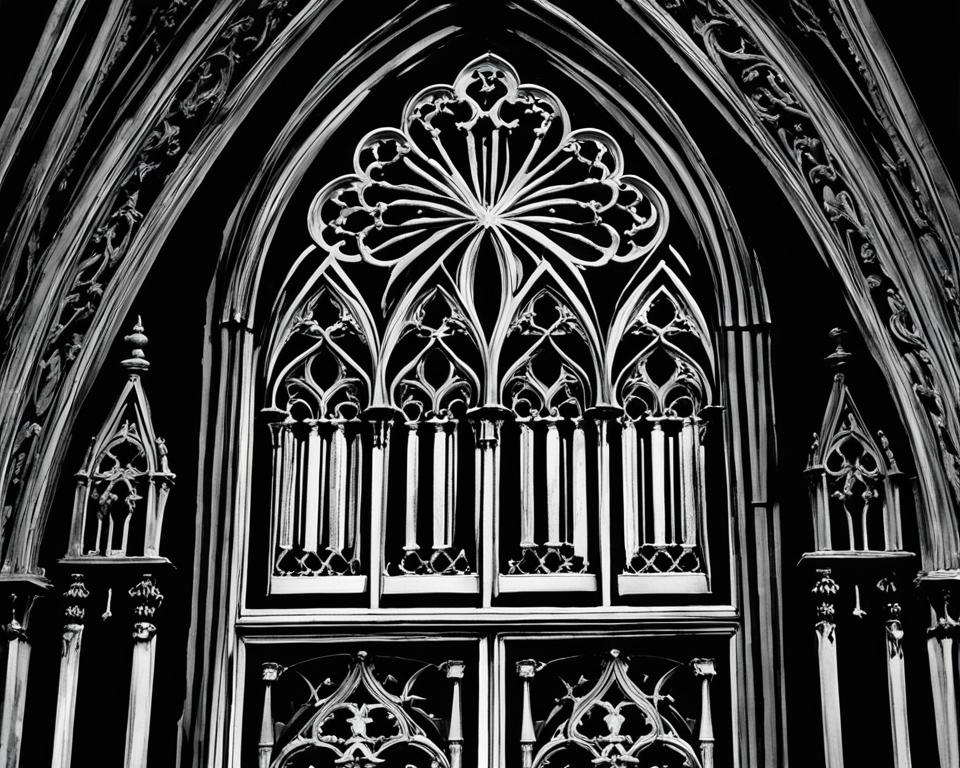
From ornately carved chairs and tables to elaborately designed cabinets, Gothic Revival furniture showcases the craftsmanship and attention to detail that defined the era. It continues to captivate collectors and enthusiasts, providing a glimpse into a bygone era of artistry and sophistication.
Notable Gothic Revival Furniture Designers.
Several influential designers played a significant role in the development of Gothic Revival furniture. In England, architects like Augustus Welby Northmore Pugin and designers like Horace Walpole embraced the Gothic Revival movement and created iconic pieces. In the United States, architects Alexander Jackson Davis and Andrew Jackson Downing popularized the style, designing Gothic Revival homes and advocating for its use in furniture.
| Name | Country | Contributions |
|---|---|---|
| Augustus Welby Northmore Pugin | England | Architect and designer known for his influential Gothic Revival designs. His work inspired the Gothic Revival movement in Britain. |
| Horace Walpole | England | A writer and designer who popularized the Gothic Revival style through his famous gothic-inspired home, Strawberry Hill House. |
| Alexander Jackson Davis | United States | An influential architect who incorporated Gothic Revival elements into his designs for homes, public buildings, and furniture. |
| Andrew Jackson Downing | United States | A prominent figure in American Gothic Revival architecture and landscape design, he advocated for the use of Gothic Revival elements in furniture. |
Collecting and Caring for Gothic Revival Furniture.
Collecting Gothic Revival furniture requires an eye for quality craftsmanship and an appreciation for the unique designs of the era. When purchasing antique pieces, it’s important to carefully inspect them for any damage or restoration. Additionally, proper care and maintenance are essential to preserving the beauty of Gothic Revival furniture. Regular dusting and avoiding exposure to direct sunlight can help prevent fading and damage.
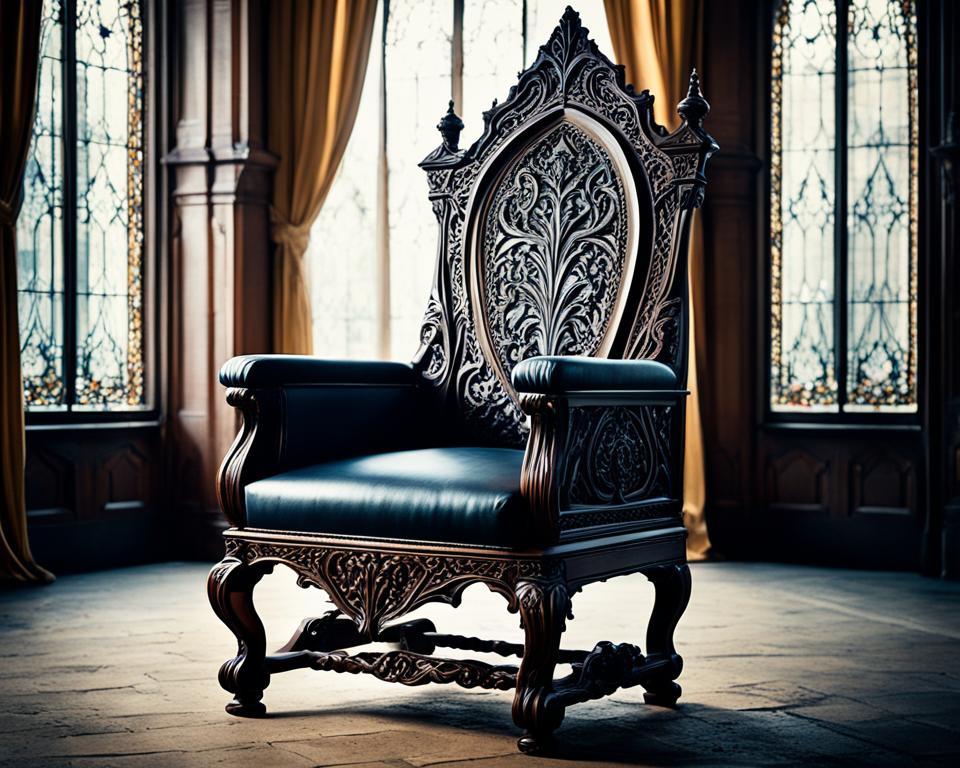
“Gothic Revival antique furniture is a valuable addition to any collection. Its distinctive designs and craftsmanship make it a sought-after choice for collectors.”
Inspecting Antique Pieces
Before adding Gothic Revival furniture to your collection, be sure to thoroughly inspect each piece. Look for signs of damage, such as cracks, repairs, or missing parts. Assess the overall condition and authenticity of the furniture, as well as any provenance or documentation that may accompany it. A reputable dealer or appraiser can provide expert guidance in determining the value and condition of antique Gothic Revival pieces.
Caring for Gothic Revival Furniture
Proper care and maintenance are essential to ensure the longevity and beauty of Gothic Revival furniture. Here are some tips to keep in mind:
- Dusting: Regularly dust the furniture using a soft cloth or feather duster. Pay attention to intricate carvings and crevices to remove any buildup of dust.
- Avoiding Sunlight: Place the furniture away from direct sunlight to prevent fading and discoloration. Consider using window treatments or UV-protective film to block harmful rays.
- Temperature and Humidity: Maintain a stable environment with moderate temperature and humidity levels to prevent warping or cracking of the wood. Use a humidifier or dehumidifier if necessary.
- Handling with Care: When moving or rearranging the furniture, take care to lift and carry it properly. Avoid dragging or sliding the pieces to prevent damage to the legs or delicate elements.
“Preserving the beauty of Gothic Revival furniture requires attention to detail and gentle handling. With proper care, these antique pieces can be enjoyed for generations to come.”
By following these guidelines, collectors can ensure that their Gothic Revival furniture remains in excellent condition and retains its value over time.
The Market for Gothic Revival Antique Furniture.
The market for Gothic Revival antique furniture is thriving, catering to the tastes and interests of collectors and enthusiasts alike. These unique pieces hold a special allure due to their historical significance, exceptional craftsmanship, and timeless beauty. For those passionate about the Gothic Revival style, acquiring authentic furniture with provenance has become a rewarding pursuit.
Authentic Gothic Revival antique furniture has the potential to command high prices in the market, especially when accompanied by exceptional craftsmanship and a documented history. Collectors value the intricate details, distinct characteristics, and aesthetic appeal of these vintage treasures.
Auctions, antique fairs, and specialized dealers are popular sources for acquiring Gothic Revival furniture. These platforms offer a variety of options, allowing collectors to explore and choose pieces that resonate with their personal tastes and preferences. The opportunity to view and inspect the furniture in person adds to the excitement and authenticity of the buying experience.
Furthermore, the advent of online platforms has made it easier than ever to find and purchase Gothic Revival antique furniture. Online marketplaces provide access to a wide range of options, enabling collectors to discover rare and unique pieces from the comfort of their own homes. This accessibility has opened up new possibilities for enthusiasts around the world to add Gothic Revival furniture to their collections.
Gothic Revival Furniture Marketplaces
Here are some notable marketplaces where you can find Gothic Revival antique furniture:
- Auctions: Participate in local or online auctions specializing in antique furniture to find coveted Gothic Revival pieces.
- Antique Fairs: Explore antique fairs and events where dealers showcase their curated collections of Gothic Revival furniture.
- Specialized Dealers: Connect with reputable dealers who specialize in Gothic Revival furniture, offering expert knowledge and a wide selection of pieces.
- Online Marketplaces: Browse online platforms dedicated to antique furniture, where sellers from all over the world list Gothic Revival pieces for sale.
Whether you are a seasoned collector or a novice enthusiast, the market for Gothic Revival antique furniture provides ample opportunities to discover and acquire these cherished pieces. As the demand for vintage and antique furniture continues to grow, the timeless beauty and captivating allure of Gothic Revival furniture ensure its enduring appeal in the marketplace.
Conclusion
Gothic Revival antique furniture continues to captivate collectors and enthusiasts with its timeless beauty and rich history. Whether it’s a Gothic Revival chair, table, cabinet, or piece of decor, these treasures bring a sense of romanticism and elegance to any space.
As the popularity of vintage and antique furniture grows, Gothic Revival pieces remain highly sought after, preserving the legacy of this captivating style for generations to come. The intricate details, stunning craftsmanship, and unique design characteristics of Gothic Revival furniture make it a true collector’s item.
Whether you’re an avid collector or simply appreciate the charm of vintage furniture, Gothic Revival antique furniture offers a touch of old-world elegance to enhance any interior. Embrace the allure of history and add a piece of Gothic Revival style furniture to your home today.
FAQ
What is Gothic Revival furniture?
Gothic Revival furniture is a style of antique furniture that originated in the 19th century as a response to the Romantic movement and a renewed interest in medieval design. It incorporates Gothic elements such as pointed arches and intricate carvings.
What are the characteristics of Gothic Revival furniture?
Gothic Revival furniture is known for its high backs with pointed arches in chairs, as well as intricate carvings of foliage, animals, and geometric patterns in tables and cabinets. It is often made from dark, rich woods like oak and mahogany.
Who were the notable designers of Gothic Revival furniture?
Some influential designers of Gothic Revival furniture include Augustus Welby Northmore Pugin and Horace Walpole in England, and Alexander Jackson Davis and Andrew Jackson Downing in the United States.
How can I care for Gothic Revival furniture?
To preserve the beauty of Gothic Revival furniture, it is important to regularly dust it and avoid exposing it to direct sunlight. Careful inspection for damage or restoration is also essential when purchasing antique pieces.
Where can I find Gothic Revival antique furniture?
Gothic Revival antique furniture can be found at auctions, antique fairs, specialized dealers, and online platforms. These sources offer a wide range of authentic pieces for collectors and enthusiasts to acquire.
What is the value of Gothic Revival antique furniture?
Authentic Gothic Revival furniture with exceptional craftsmanship and provenance can command high prices in the market. The value of these antique pieces is determined by factors such as rarity, condition, and historical significance.

